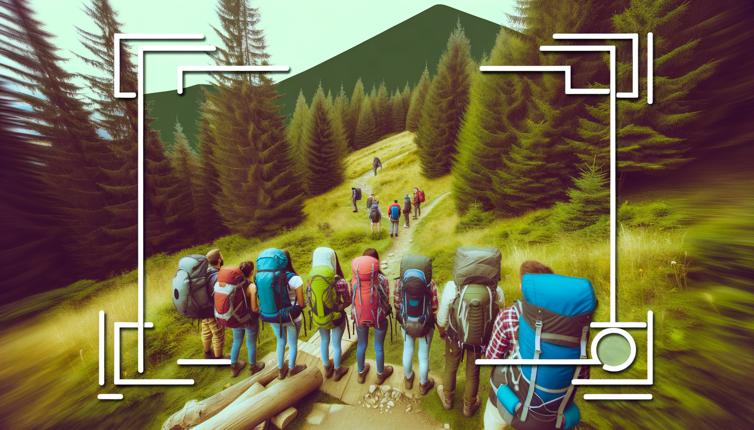Distance and Duration
The first consideration when choosing a backpacking trail is the distance and duration of the hike. Determine how many days you have available for your trip and how many miles you are comfortable hiking each day. This will help you narrow down your options and ensure you have enough time to complete the trail.,It's important to consider your fitness level and hiking experience when deciding on the distance and duration of your backpacking trip. If you are a beginner or have limited experience, it may be best to start with shorter trails and gradually increase the difficulty level over time.,Additionally, take into account the terrain and elevation gain of the trail. Steep inclines and rugged terrain can significantly impact your hiking speed and overall endurance.
Difficulty Level
The difficulty level of a backpacking trail is another crucial factor to consider. Trails are typically categorized as easy, moderate, or difficult. Be honest with yourself about your physical abilities and choose a trail that matches your fitness level.,Easy trails are generally well-maintained with minimal elevation gain. These are great for beginners or those looking for a more leisurely backpacking experience.,Moderate trails may have steeper sections and require some level of physical fitness. These trails offer a good balance between challenge and enjoyment.,Difficult trails are usually longer and more strenuous, with steep climbs and rugged terrain. These trails are best suited for experienced backpackers with a high level of fitness.,Research the difficulty level of the trail you are considering and read reviews from other hikers to get an accurate idea of what to expect.
Scenic Beauty and Points of Interest
One of the most rewarding aspects of backpacking is the opportunity to immerse yourself in stunning natural landscapes. Consider the scenic beauty and points of interest along the trail when making your decision.,Research the trail to find out if it offers picturesque views, such as mountain peaks, lakes, waterfalls, or unique geological formations. Look for trails that pass through diverse ecosystems, such as forests, meadows, or deserts.,Additionally, consider any points of interest or attractions along the trail. This could include historical sites, wildlife viewing opportunities, or notable landmarks. These can add an extra element of excitement and exploration to your backpacking adventure.
Permits and Regulations
Before embarking on your backpacking trip, it is crucial to understand and comply with any permits and regulations that may apply to the trail you have chosen.,Some popular backpacking trails require permits or have limited availability to protect the natural environment and ensure a positive hiking experience for all visitors. Research the specific permit requirements and application process well in advance, as permits may need to be obtained months in advance.,In addition to permits, familiarize yourself with any regulations or restrictions that may be in place. This could include camping restrictions, fire regulations, wildlife protection measures, or waste disposal guidelines. Adhering to these guidelines will help preserve the trail for future hikers and maintain the overall experience for everyone.
Safety Considerations
Safety should always be a top priority when backpacking. Before choosing a trail, evaluate the potential risks and take necessary precautions to ensure your wellbeing.,Research the current weather conditions and seasonal variations of the trail. Extreme temperatures, heavy rain, or snow can significantly impact hiking conditions and safety. Choose a trail that aligns with the weather conditions you are comfortable hiking in.,Additionally, be aware of any potential hazards along the trail, such as river crossings, steep drop-offs, or wildlife encounters. Carry essential safety gear, including a map, compass, first aid kit, and emergency communication device.,Inform someone of your hiking plans, including the trail you will be hiking, your expected duration, and any emergency contact information. This will help rescue teams locate you in case of an emergency.,Always practice Leave No Trace principles and pack out all trash and waste. Respect wildlife and their habitats, and follow proper food storage techniques to prevent encounters with bears or other animals.
Conclusion
Choosing the best backpacking trail requires careful consideration of various factors, including distance and duration, difficulty level, scenic beauty, permits and regulations, and safety considerations. By taking the time to research and plan your hike, you can ensure a successful and memorable backpacking experience.









